Toyota Camry Hybrid Vs. Hyundai Sonata Hybrid
KNOW THE FACTS
Matching up closely in price and fuel efficiency the Toyota Camry Hybrid starts at $25,990 for the base LE while our XLE tester begins at $27,500. Both prices are comparable to various trim options of Toyota’s smaller, style-challenged Prius. As for the Sonata, its starting price is $25,850.
While the base Camry LE Hybrid averages 43-mpg city and 39-mpg highway for a combined 41-mpg, our XLE tester gets a slightly lower score at 40/38-mpg and 40-mpg combined. The Sonata Hybrid, once the segment leader, now falls slightly short at 35-mpg city and 40-mpg highway for a combined 37-mpg.
Both hybrids achieve their numbers in very different ways, though more on that later.
THE INSIDE OF ECO LUX
In the style department the Camry offers a basic Toyota touch while the Sonata is defined by Hyundai’s modern-mojo. The Camry’s interior is set up with all the no-frills necessities such as a multi-information display, dual-zone climate control, smart key entry with push button start, and bluetooth capability. Hospitable, the Camry easily accommodates five passengers and rear seating offers a fold down center armrest and dual cup holders. Lugging cargo is also made easy with a rear seat 60/40 split and trunk storage exceeds that of the Sonata.
Our XLE tester had additional accessories such as an 8-way power adjustable driver seat, an auto-dimming rearview mirror with compass, rear air vents, and a leather-wrapped steering wheel with integrated audio controls. For more luxury, the $3,820 Leather Package includes leather-trimmed Ultra suede heated front seats and leather door trim, as well as a few other leathery touches. The Premium HDD Navigation Package includes those items and adds more tech and safety features for $6,320. With several other packages in-between, Toyota lets customers define their hybrid for a price.
Inside the Sonata’s cabin it’s certainly more forward-thinking, though lacking in material quality and decidedly less-premium. What makes the Sonata unique in this category, however, are special features like a panoramic sunroof. And beyond those style points, the Sonata incorporates finishings like premium cloth or perforated leather seating surfaces, metal accents, simulated leather inserts, chrome accents, rear seat vents, dual-zone climate control, a leather-wrapped steering wheel with audio controls and Bluetooth. Getting more bells and whistles to the standard package requires an additional $1,500 for the Leather Package (adding comfortable leathery accoutrements) or $5,500 for the Ultimate Package (more tech and tweaks).
Similarly equipped, the Sonata wins in the looks department but once you get close and begin to touch and feel, decades of refinement in the Camry show through.
Get the Flash Player to see this player.
OUTER LIMITS
Exterior styling reflects the interior of each car with the Camry’s bodywork hard and stiff, with rounded off lines and a robust shape. Conventional for a mid-size sedan, the Camry Hybrid stands out as a subtly-styled hybrid.
Compare Specs
| Vehicle | 2012 Toyota Camry Hybrid XLE | Advantage | 2012 Hyundai Sonata Hybrid |
|---|---|---|---|
| Engine | Gas/Electric 2.5L I4 | Gas/Electric 2.4L I4 | |
| Horsepower | 200 | Sonata | 206 |
| Max. Torgue | 199 | Camry | 196 |
| Fuel Economy | 40 MPG city / 38 MPG hwy | Camry | 35 MPG city / 40 MPG hwy |
| Transmission | Electronic CVT | 6-Speed Elec. Automatic | |
| Trunk Space (cu. ft.) | 13.1 | Camry | 10.7 |
| Starting Price | $27,500 | Sonata | $25,850 |
Conversely, there’s the sculpted and emotive Sonata, which exudes Hyundai’s new confidence. However, what Toyota engineers did with the Camry Hybrid was allow it to have a timeless look that instantly evades stigmas that come with eco-friendly cars – something many a mid-size sedan buyer might prefer. True, looks are subjective, though it’s hard to argue that the Sonata is the more attractive vehicle due to its contemporary feel.
DRIVE EXPERIENCE
Fuel economy numbers aside, it’s perhaps the driving experience that differentiates these two cars the most, notably the Camry’s CVT transmission versus the 6-speed automatic in the Sonata.
While technically boasting more power, on the road the Hyundai was lethargic and unresponsive. This is in part due to the its standard Blue Mode, which dulls throttle response excessively and demands almost maximum throttle pressure before the gas engine turns on to assist. When turned off, it’s more livable, but then fuel economy suffers significantly.
Surprisingly, the CVT is the superior transmission in this case, allowing for a smoother, more controlled, responsive and fuel-efficient commute. Smoothness goes without saying, but the real difference-maker is that when paired with the electric torque it’s also more responsive than the Sonata in day-to-day driving.
Along with the Eco button, the Camry also gains an EV mode, which helps ensure only the electric motor is moving the car. It‘s designed for travel at low speeds for a short time and has to be manually enabled. However, drivers have to be conscious of their driving style in this mode, or else EV mode will be disabled by accelerating quickly or reaching higher speeds – neither of which are hard to do.
Generally, the experience of driving the Camry is that it is a surprising pleasure since it often exceeded expectations both in exasperating traffic and long-distance commutes.
FINAL ROUND AND FUEL SCORES
When it comes to real-world numbers, the answer is clear. The Camry time-and-again delivers better fuel economy numbers than the Sonata, something that was not entirely unexpected thanks to Toyota’s experience with hybrid vehicles.
On some occasions, the Camry manages to see numbers far exceeding the EPA’s ratings. Overall though, at 39-mpg, the Camry was slightly below the EPA-rated numbers during our testing. However it’s entirely feasible that one could achieve 40 miles per gallon or better in variable driving conditions, especially if the driving is done in a non-aggressive manner.
The Sonata’s fuel economy numbers, already below the Camry, failed more significantly to match up in the real world with a 34-mpg average rather than the claimed 37-mpg.
THE VERDICT
Outmatched in this green-car battle, the Sonata Hybrid’s best features remains its style (inside and out) as well as a selection of unique options. Overall, there’s little question as to the better car, with the gas-electric Camry delivering, as expected, superior fuel economy. Comparing the two cars head-to-head, however, also showed the Camry’s superior ride and interior quality, making it the clear choice for those searching for an ultra-efficient family sedan.
2012 Toyota Camry Hybrid XLE, 2012 Hyundai Sonata Hybrid
LOVE IT
- Superior fuel economy
- Comfortable seating
- Smooth driving experience
- Large trunk space
- Exterior styling
- Ergonomic interior design
- Panoramic sunroof option
LEAVE IT
- Bland exterior & interior styling
- Clunky interior and technology
- Crude driving feel
- Blue Mode is restrictive
- Unimpressive real world fuel economy
More by Richard Cazeau


















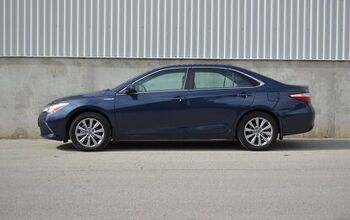

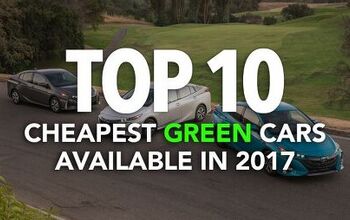


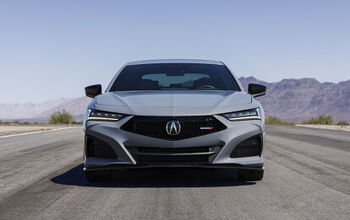

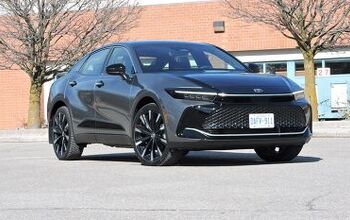

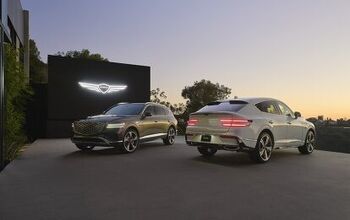



Comments
Join the conversation